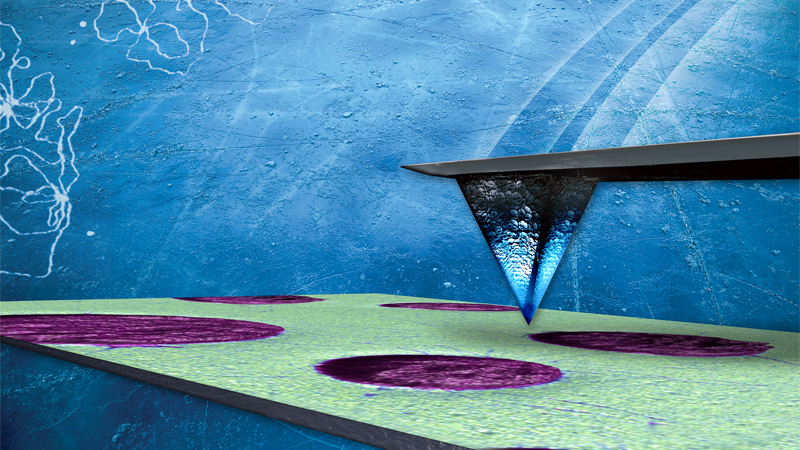Torsional Resonance MFM (TR-MFM)
TR‑MFM maps magnetic field distribution with a sensitivity to the lateral fields (in contrast to the vertical fields in conventional MFM). Magnetic domain information is directly correlated to sample topography, and can also be acquired while applying external magnetic fields to the sample.
In conventional MFM, the cantilever is oscillated vertically, whereas in TR‑MFM this oscillation is replaced by an (essentially) horizontal one, creating a torsional mode. The tip selectively detects the field that has a force gradient parallel to the tip. These in‑plane force gradient components can be measured with the same resolution and signal‑to‑noise ratio as flexural modes at the same location, providing magnetic information complementary to conventional MFM.
Studies evaluating the use of TR‑MFM for imaging magnetic structures have shown its ability to obtain magnetic contrast free from topographic influence, with similar lateral resolution as standard MFM. When combined with standard MFM, TR‑MFM is especially useful for studying the 3D nature of magnetic field distributions, as it provides access to the lateral field information.
